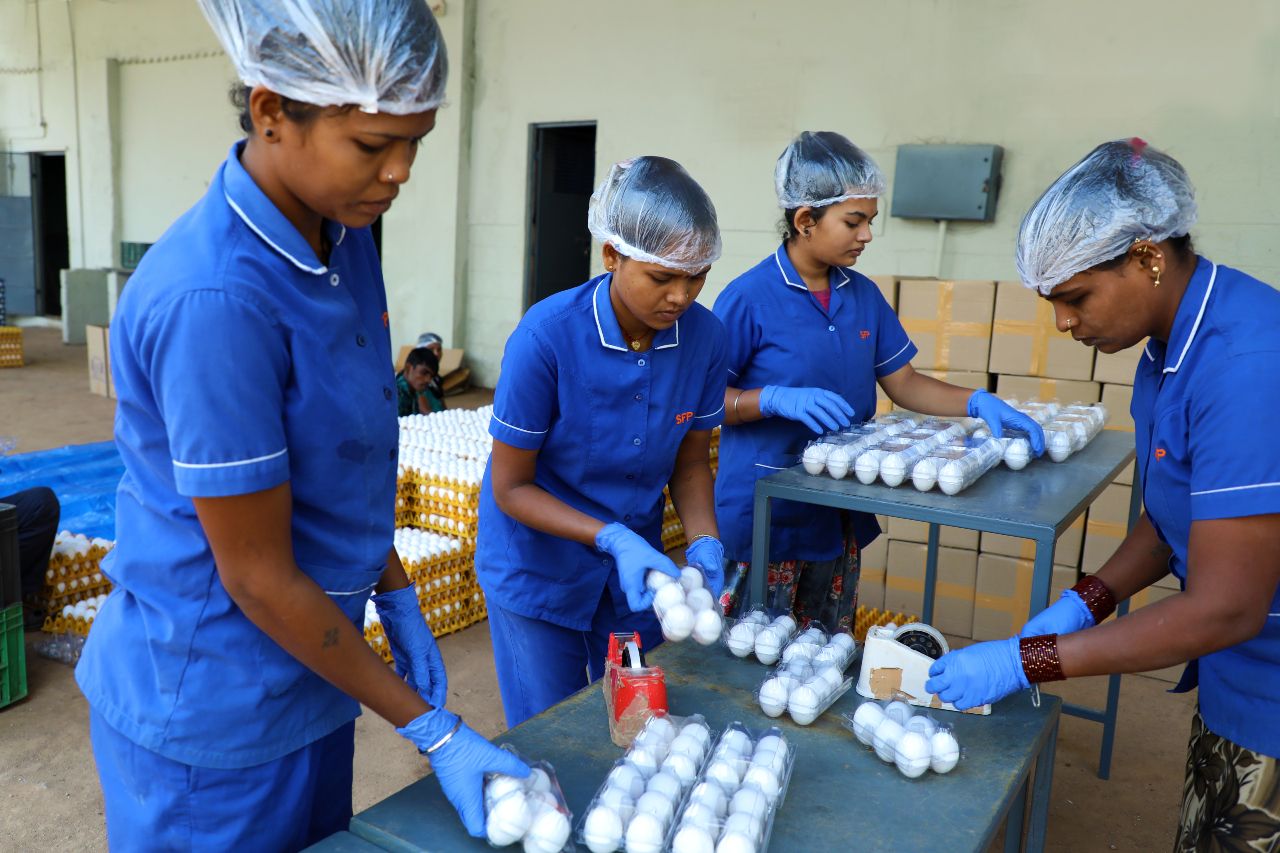Quality determines the acceptability of a product to potential customers. The quality of eggs and their stability during storage are largely determined by their physical structure and chemical composition. It is important therefore that those concerned with the handling of eggs are knowledgeable about this information in order to understand why eggs need to be treated in specific ways and to have a rational basis for day-to-day marketing decisions.
Grading and Standardization
Grading and standardization consist of arranging produce into a number of uniform categories according to physical and quality characteristics of economic importance. It is a process of identification, classification and separation. The advantages of grading and standardization are as follows.
Packaging of Shell Eggs
Nature has given the egg a natural package - the shell. Despite its relative strength, the egg is an extremely fragile product and even with the best handling methods, serious losses can result from shell damage. Economical marketing generally requires that eggs be protected by the adoption of specialized packaging and handling procedures.

Functions of packaging
Packaging is an important component in delivering quality eggs to buyers. It embraces both the art and science of preparing products for storage, transport and eventually sale. Packaging protects the eggs from:
• micro-organisms, such as bacteria;
• natural predators;
• loss of moisture;
• tainting;
• temperatures that cause deterioration; and
• possible crushing while being handled, stored or transported.
Proper handling and storage, as seen in the previous chapter, help control moisture loss, but appropriate packaging may also help prevent it. Eggs also need to breathe, hence the packaging material used must allow for the entrance of oxygen. The material used must be clean and odourless so as to prevent possible contamination and tainting. Authentic egg packaging materials can be reused, but careful attention must be paid to possible damage, odours and cleanliness. The packaging must be made to withstand handling, storage and transport methods of the most diverse kind and to protect the eggs against temperatures that cause deterioration and humidity. Finally, consumers like to see what they are buying, especially if it concerns fresh produce. An egg package should be designed so that the customers not only recognize the product as such, but can also see the eggs they are buying.
Transportation
For the successful transport of shell eggs three essential requirements must be met.
1. The containers and packaging materials must be such that the eggs are well protected against mechanical damage.
2. Care should be taken at all stages of handling and transport. Workers handling eggs should be instructed so that they appreciate the need for careful handling. The provision of convenient loading platforms at packing stations, loading depots and railing stations, and handling aids, such as hand trucks and lifts, are of great help.
3. The eggs must be protected at all times against exposure to temperatures that cause deterioration in quality as well as contamination, especially tainting.

Recommended temperatures for loading and transport
Transport over 2 or 3 days |
Transport over 5 or 6 days |
|
| Maximum on loading | +6° C | +3° C |
| Recommended for transport | -1° to + 3° C | -1° to + 1° C |
| Acceptable for transport | 1° to + 6° C | 1° to + 3° C |
A basic prerequisite for all long-distance transport is that arrangements be made for proper reception, handling and storage at the end of the journey. This is especially important where large lots are delivered to a relatively small market. Without access to suitable storage facilities, the eggs may have to be marketed quickly under adverse climatic conditions, which may cause substantial quality deterioration and price losses.
Delivery of high quality eggs over long distances, especially in hot climates, generally calls for refrigeration. Requirements for the successful operation of refrigerated transport equipment are rather rigid especially as regards the following factors:
• efficiency and durability of insulation;
• adequacy and reliability of the cooling mechanism; and
• adequate circulation of air within the vehicle or container so that variations of temperature are slight.
Decisions on the establishment of new refrigerated transport services for eggs should be based on thorough economic as well as technical evaluations.
The following criteria should be taken into consideration.
• The need for a managerial and operational staff that is competent in all the operations involved in assembling, loading and distributing.
• The necessity of a sufficient volume of trade throughout the year.
• The possibility of making up loads with other compatible produce, e.g. dairy products.
• The possibility of carrying return loads, once eggs have been distributed.
• The degree to which the demand for refrigerated transport is concentrated geographically.

